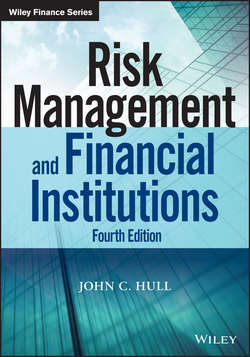Читать книгу Risk Management and Financial Institutions - Hull John C. - Страница 13
На сайте Литреса книга снята с продажи.
CHAPTER 1
Introduction
1.7 CREDIT RATINGS
ОглавлениеCredit ratings provide information that is widely used by financial market participants for the management of credit risks. A credit rating is a measure of the credit quality of a debt instrument such as a bond. However, the rating of a corporate or sovereign bond is often assumed to be an attribute of the bond issuer rather than of the bond itself. Thus, if the bonds issued by a company have a rating of AAA, the company is often referred to as having a rating of AAA.
The three major credit rating agencies are Moody’s, S&P, and Fitch. The best rating assigned by Moody's is Aaa. Bonds with this rating are considered to have almost no chance of defaulting. The next best rating is Aa. Following that come A, Baa, Ba, B, Caa, Ca, and C. The S&P ratings corresponding to Moody's Aaa, Aa, A, Baa, Ba, B, Caa, Ca, and C are AAA, AA, A, BBB, BB, B, CCC, CC, and C, respectively. To create finer rating measures Moody's divides the Aa rating category into Aa1, Aa2, and Aa3; it divides A into A1, A2 and A3; and so on. Similarly S&P divides its AA rating category into AA+, AA, and AA−; it divides its A rating category into A+, A, and A−; and so on. Moody's Aaa rating category and S&P's AAA rating are not subdivided, nor usually are the two lowest rating categories. Fitch's rating categories are similar to those of S&P.
There is usually assumed to be an equivalence between the meanings of the ratings assigned by the different agencies. For example, a BBB+ rating from S&P is considered equivalent to a Baa1 rating from Moody’s. Instruments with ratings of BBB− (Baa3) or above are considered to be investment grade. Those with ratings below BBB− (Baa3) are termed noninvestment grade or speculative grade or junk bonds. (In August 2012, S&P created a stir by downgrading the debt of the U.S. government from AAA to AA+.)
We will learn a lot more about credit ratings in later chapters of this book. For example, Chapter 6 discusses the role of ratings in the credit crisis that started in 2007. Chapters 15 and 16 provide information on how ratings are used in regulation. Chapter 19 provides statistics on the default rates of companies with different credit ratings. Chapter 21 examines the extent to which the credit ratings of companies change through time.
